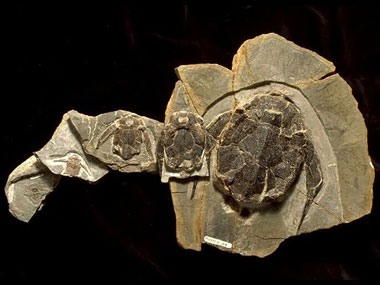Be Informed
Sign up for Sépaq emails to be the first to find out about our promotions, news and special offers.
Having extensive knowledge of the parks to better preserve them is the foundation that justifies the efforts invested in inventories, monitoring programs and scientific research. At Parc national de Miguasha, the research is based on systematic archaeological digs. These digs aim to collect new specimens, but also to accumulate a maximum of information about these fossils, such as their position and orientation in the cliff. These fossils and this information help with:
Find out more about scientific research in the Québec's National Parks network
The Miguasha fossil site is renowned for its cases of exceptional fossilization, including the preservation of a series of ontogenesis or fossil growth episodes. These specimens of various sizes represent different stages of development for the same species, including larvae, juveniles, and adults. By ordering such a series of specimens according to size, it is possible to describe the growth of a fossil organism. The interest in studying the growth of a species that has been extinct for millions of years lies in the fact that the new morphological features that appear during the evolution of living beings are caused by changes in development. When these changes are transmitted from generation to generation, they persist in time and become typical characteristics of living organisms.

A series of growth episodes of the Bothriolepis canadensis placoderm fish
Thus, an ongoing research project focuses on various aspects of the development of the Bothriolepis canadensis placoderm fish, the most abundant species in the fossiliferous formation. The research partnership between Parc national de Miguasha, Université du Québec à Rimouski, and the Natural History Museum of London triggers new discoveries concerning this fish, which has been under the scrutiny of paleontologists for more than a century and about which we thought we knew everything. Finally, despite decades of study, it must be acknowledged that a number of mysteries remain hidden under the solid armour of Bothriolepis canadensis. We still have a whole lot more to learn from the Miguasha site!
Sign up for Sépaq emails to be the first to find out about our promotions, news and special offers.